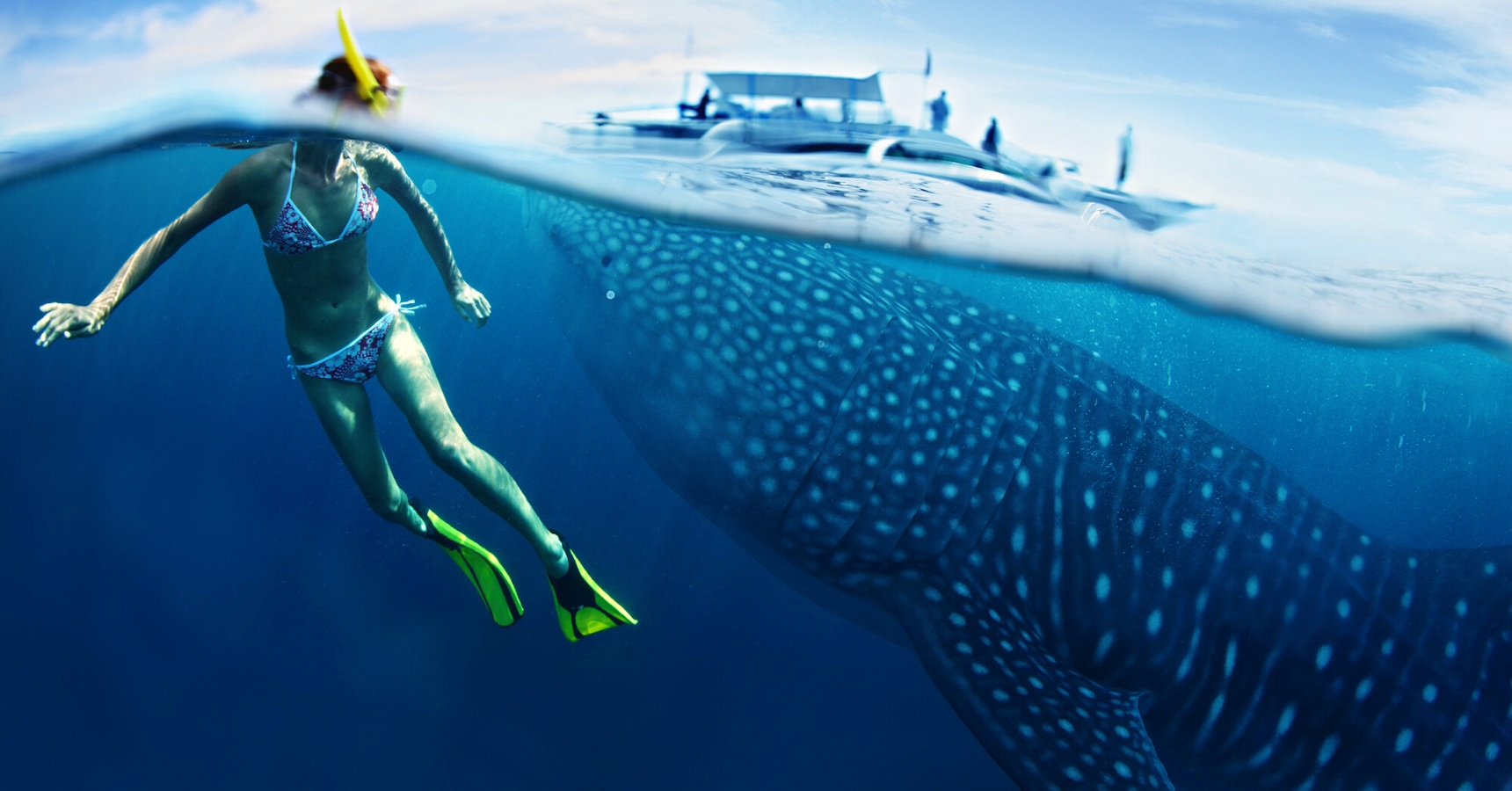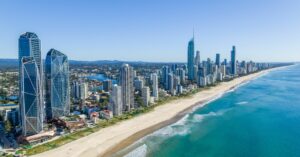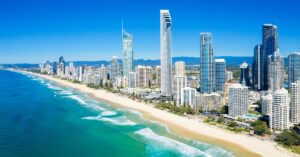Certain animal encounters drive the making of holiday plans. People dream of visiting Kruger National Park to spot elephants and giraffes roaming the African savanna and Borneo to chance a sighting of a wild orangutan in the rainforest canopies. Australia’s Coral Coast’s calling card is swimming with the ‘big three’ — whale sharks, humpback whales, and manta rays — on the Ningaloo Reef.
Here’s how you can come face-to-face with each of them responsibly and sustainably.
Manta rays
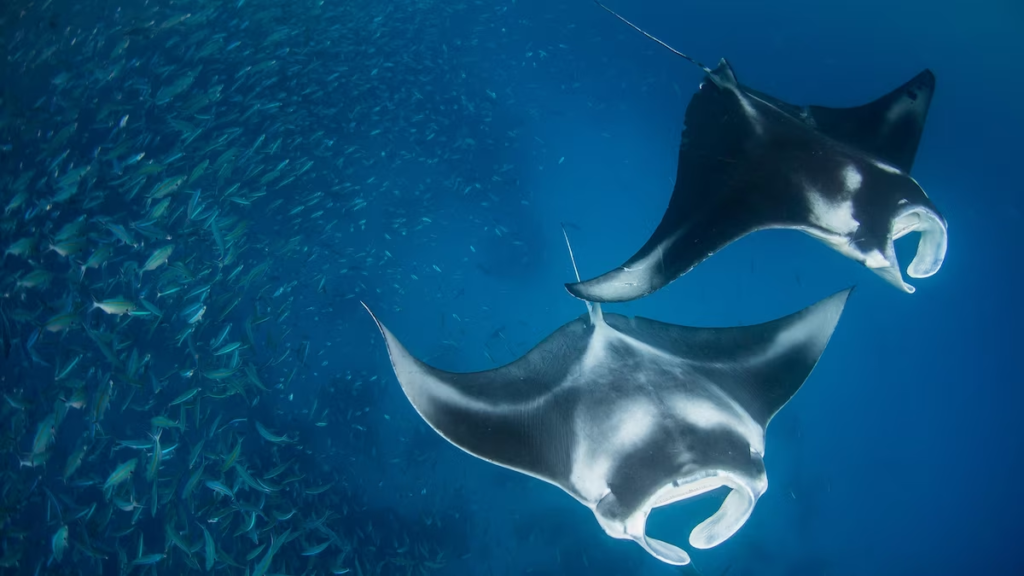
Swim alongside these magnificent creatures as they show off their aquabatic and aerobatic skills in the waters around Coral Bay.
Manta rays are the largest of the ray family, weighing up to 1500 kilograms and their wingspan stretching up to several metres. Their large, open mouths may be intimidating at first, but rest assured, they’re just large filters sifting plankton and krill from the ocean water. Fortunately for manta swim seekers, the rays like swimming in shallow waters around ten metres deep, making them easier to spot.
In the water, manta rays are graceful beings, their gliding and smooth somersaulting gymnastics an almost hypnotic sight. Occasionally, you can catch them leaping out of the water, landing with a mighty slap. Though they’re technically related to the shark family, these gentle giants are anything but scary. They don’t have teeth or a barb, making them incredibly safe to swim with.
Manta Ray swim tours depart from Coral Bay year-round, dropping you on the Ningaloo Reef for your encounter. You’ll be provided with everything you need — from wetsuits to fins — and given a briefing on how to interact with the creatures.
Whale sharks
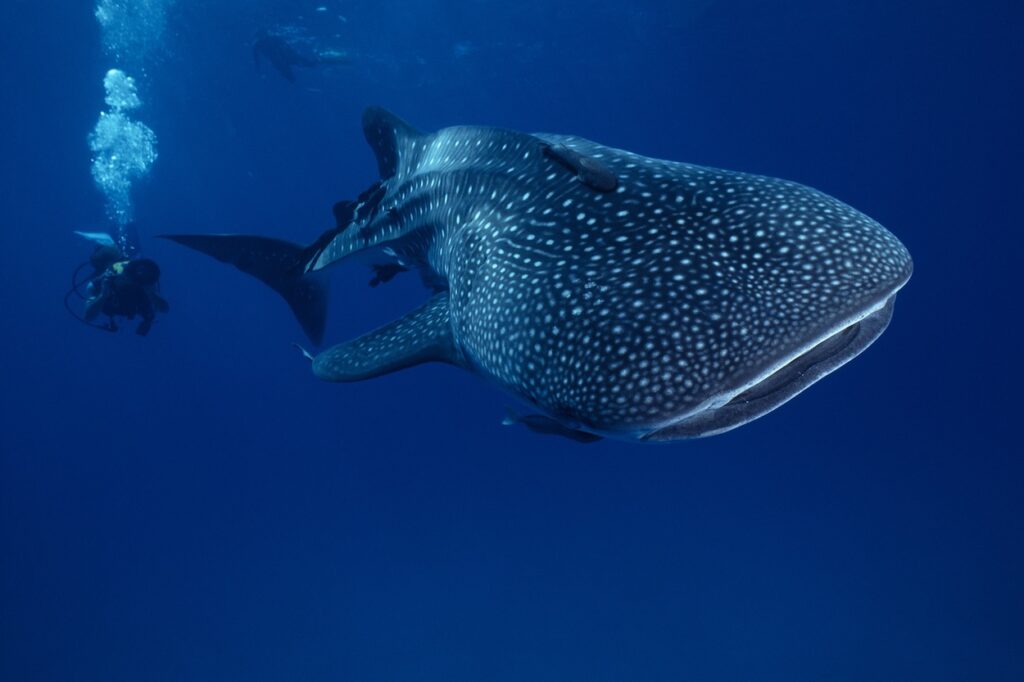
A swim in the presence of whale sharks is nothing short of mesmerising. It’s a wildlife encounter so rare that only one in three million people ever get to swim with the gentle giants in their lifetime.
Only a few places in the world attract whale sharks, the Ningaloo Reef being one of the most consistent congregations. Reaching up to 11 metres in length, they’re officially the largest species of fish in the ocean and completely harmless to humans. Though their mouths are sizeable, they’re filled with the tiniest of teeth, capable of processing shrimp, krill, and plankton only.
During whale shark season (March to September), swim tours depart from Exmouth and Coral Bay daily. Slip into the water on your snorkel leader’s command and look down to see the whale shark’s huge figure approach, mouth agape, before taking off with them. It’s a harmonious moment of appreciation for the underwater giants. All snorkel tours are conducted in small numbers to ensure an intimate experience with the creature without compromising on responsibility and sustainably.
If you are not keen to make the big dive, you can also observe the whale sharks from the boat.
Humpback whales
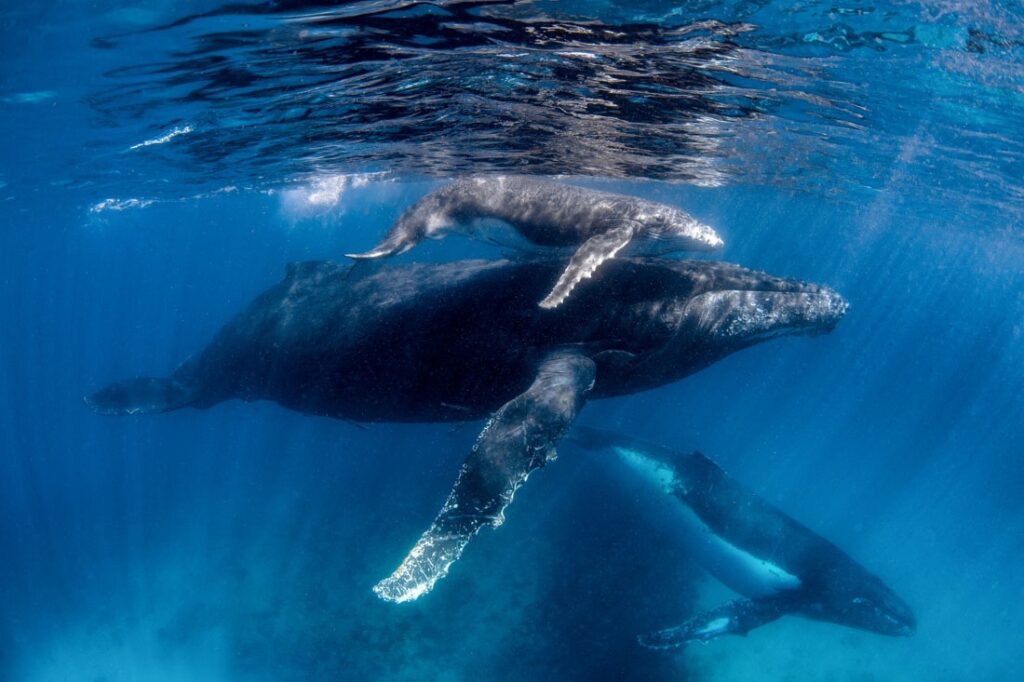
The Ningaloo Marine Park is one of the few places in the world where you can get in the water with the colossal humpback whale. Swimming alongside them will no doubt make you feel dwarfed as they can reach up to 18 metres in length and weigh up to 40 tonnes.
It’s estimated that over 40,000 humpback whales migrate along the West Australian coast each year, swimming to the warmer waters of the north during the winter and back south for the summer. You can spot their breaching and tail slapping from vantage points right the way up the coast, but getting up close and personal with them on a swim tour is a once-in-a-lifetime experience.
Tours leave Coral Bay and Exmouth from July 1st and August 1st, respectively, running daily until October (though dates may vary dependent on migration patterns). A maximum of seven swimmers are allowed in the water at a time, snorkelling a safe distance from the creatures to ensure minimal disruption. Less confident swimmers are more than welcome to join the tours and watch from the boat for a discounted price.
Travel Australia with So Where Next
Lead image: Dudarev Mikhail



